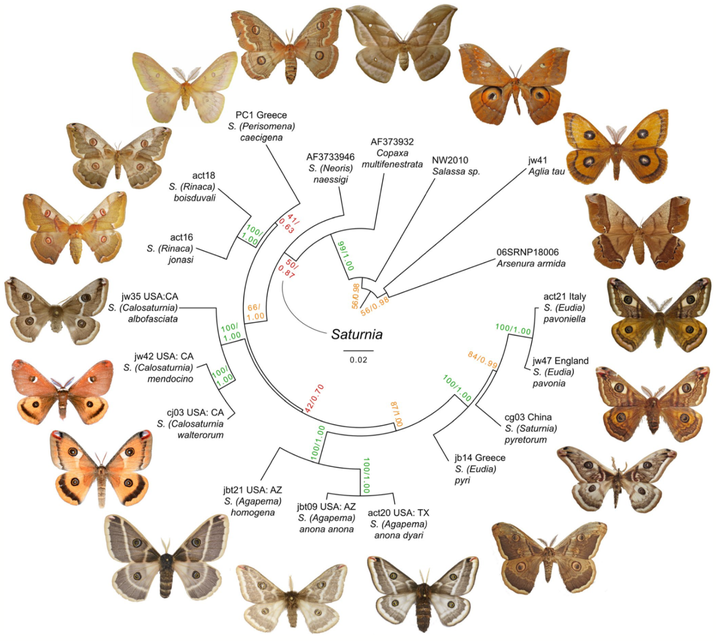In and out of America: Ecological and species diversity in Holarctic giant silkmoths suggests unusual dispersal, defying the dogma of an Asian origin
 Image credit: C Doorenweerd
Image credit: C DoorenweerdAbstract
Aim: There is growing evidence that the North Atlantic Land Bridge may have had a significant, underappreciated, role in structuring northern hemispheric biodiversity. Understanding the biogeography of less vagile animals with specific habitat requirements could provide fine‐scale information about the duration and environmental conditions of both the North Atlantic Land Bridge and the Bering Land Bridge. Location: Asia, Europe and North America. Taxon: Saturnia giant silkmoths. The genus has a relictual distribution from the Neogene, with species and subgenera endemic to subregions across the Northern Hemisphere. Methods: We sequenced six genes totalling 4,674 base pairs from representatives of all subgenera and augmented this with publicly available COI sequences to build a dataset covering 34 Saturnia species—about half of the described species. Datasets were subjected to phylogenetic, molecular dating and biogeographic analyses. Results: We found that adding a ‘jump’ parameter to a dispersal–extinction–cladogenesis (DEC) model results in contradictory biogeographic inferences, with the jump dispersal model being more biologically plausible for Saturnia. We found that Saturnia has a much earlier origin in North America than previously thought, and from there colonized Europe. The most parsimonious scenario involves a relatively recent (19.6– 11.7 Ma) transit across the North Atlantic Land Bridge, and subsequent dispersal across all of Eurasia. Without jump dispersal, Saturnia biogeography requires complex patterns of in situ extinction and recolonization followed by bursts of dispersal and speciation. Main conclusions: Although it is difficult to verify the appropriate model through fossil data or tectonic histories, allowing jump dispersal in Saturnia moth biogeography invokes far fewer assumptions and indicates the use of both Beringia and the North Atlantic Land Bridge, suggesting the importance of the latter for other groups may be underestimated.